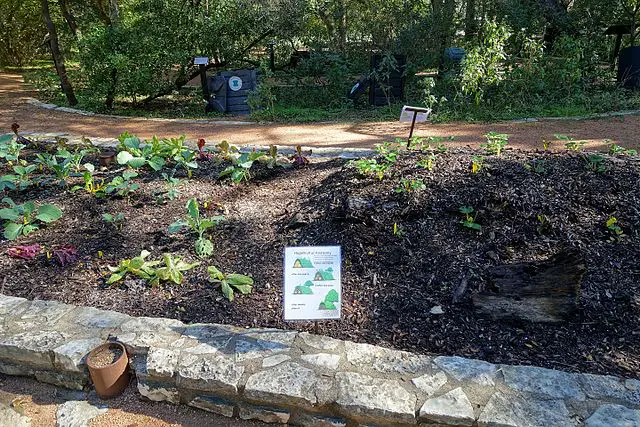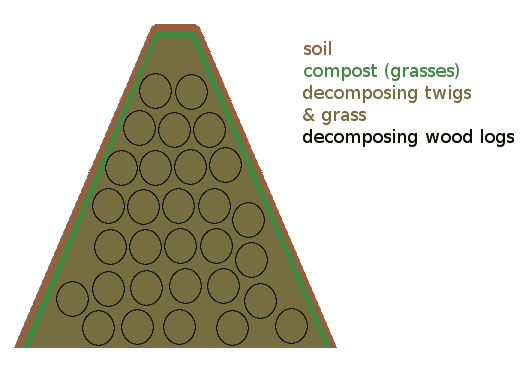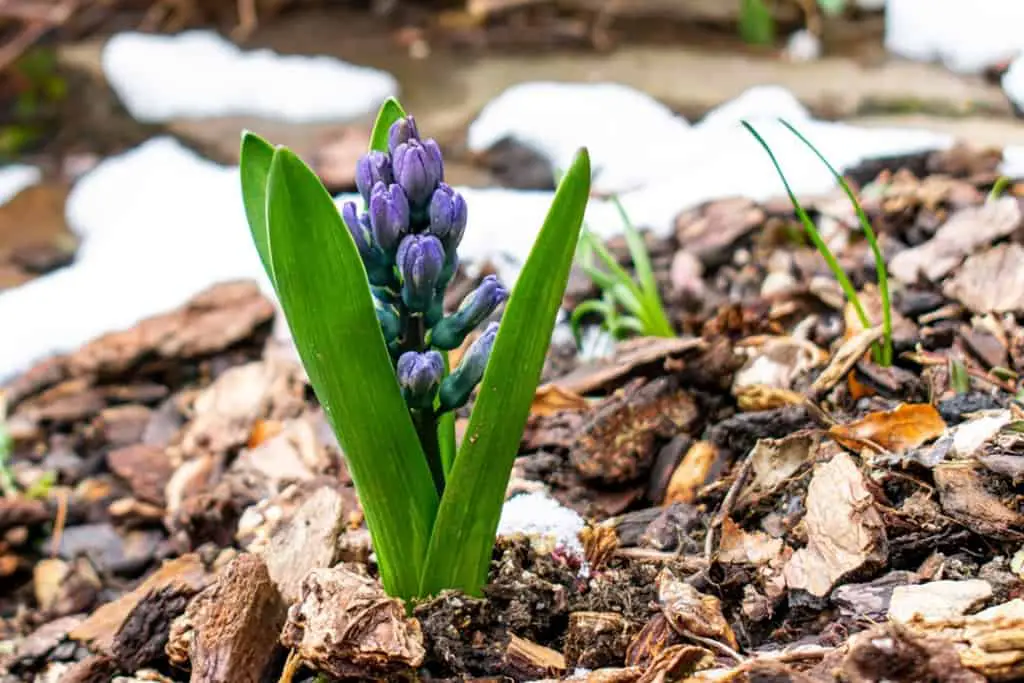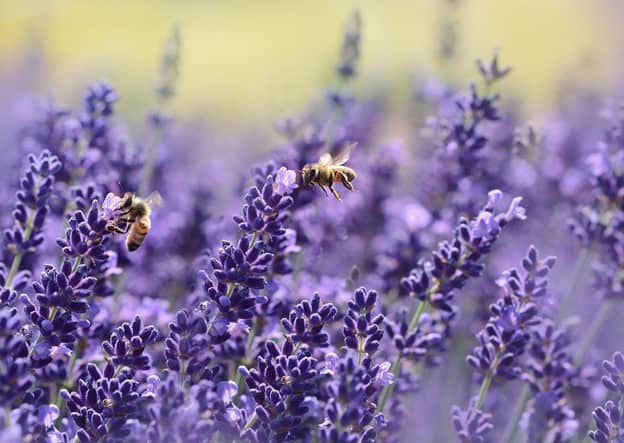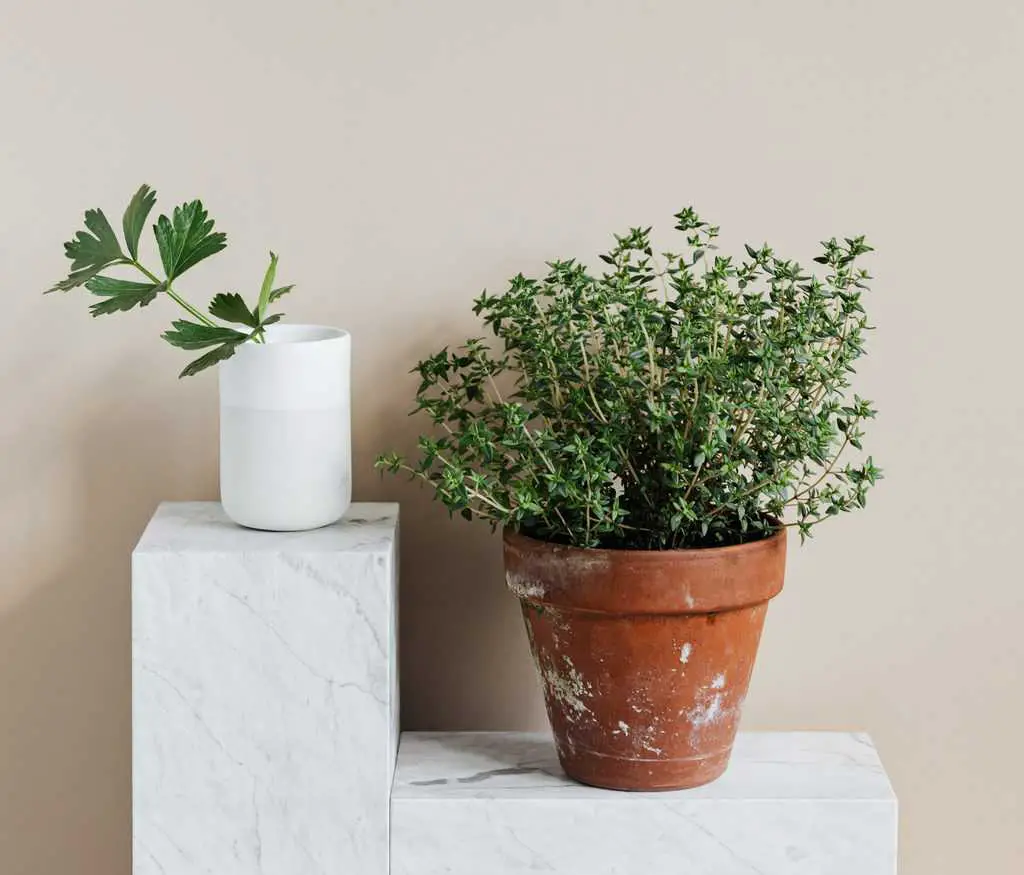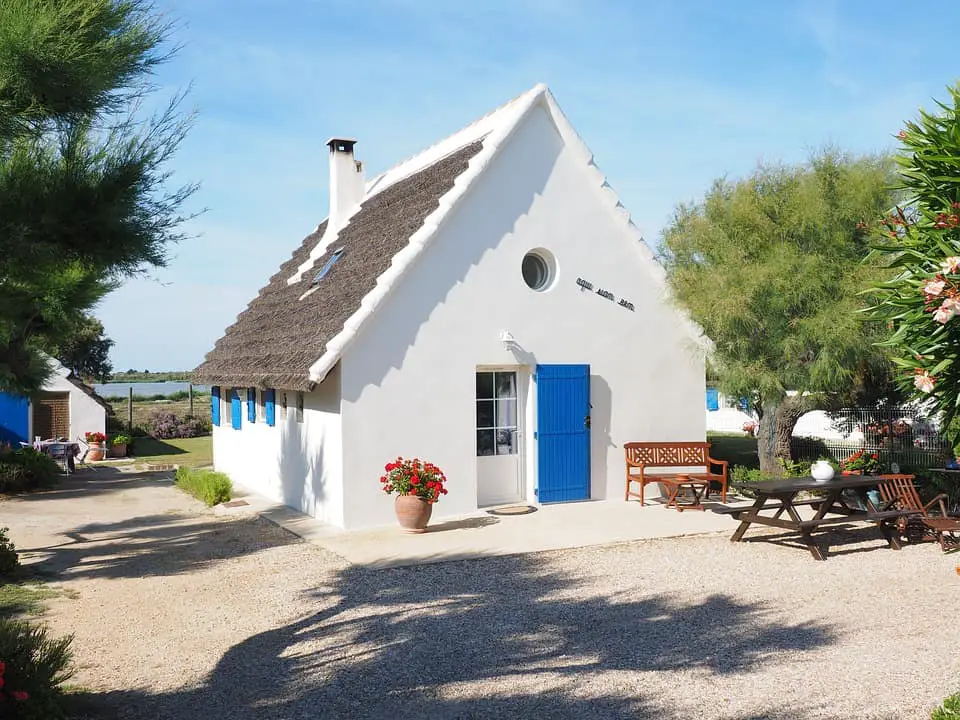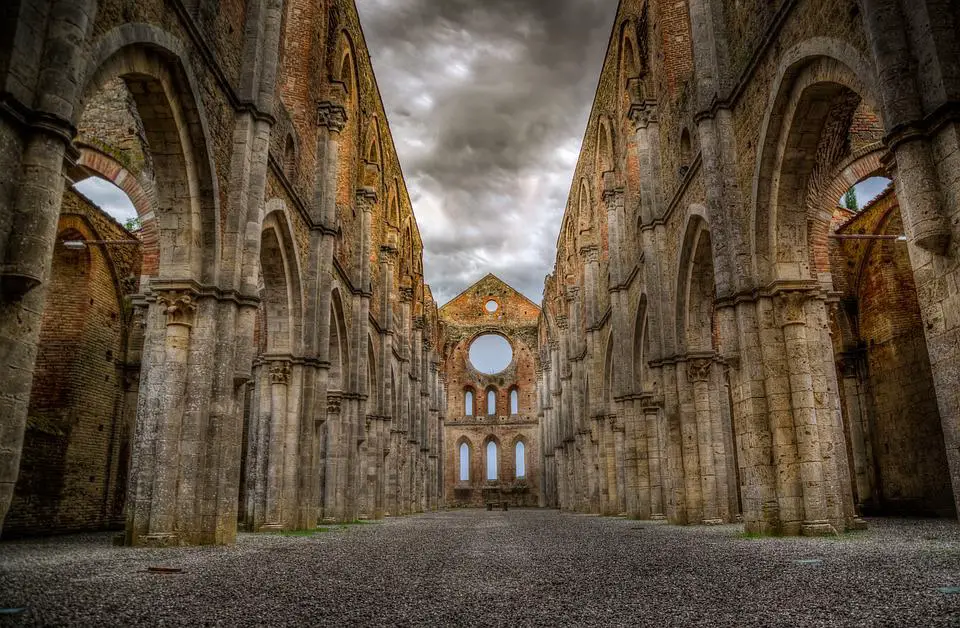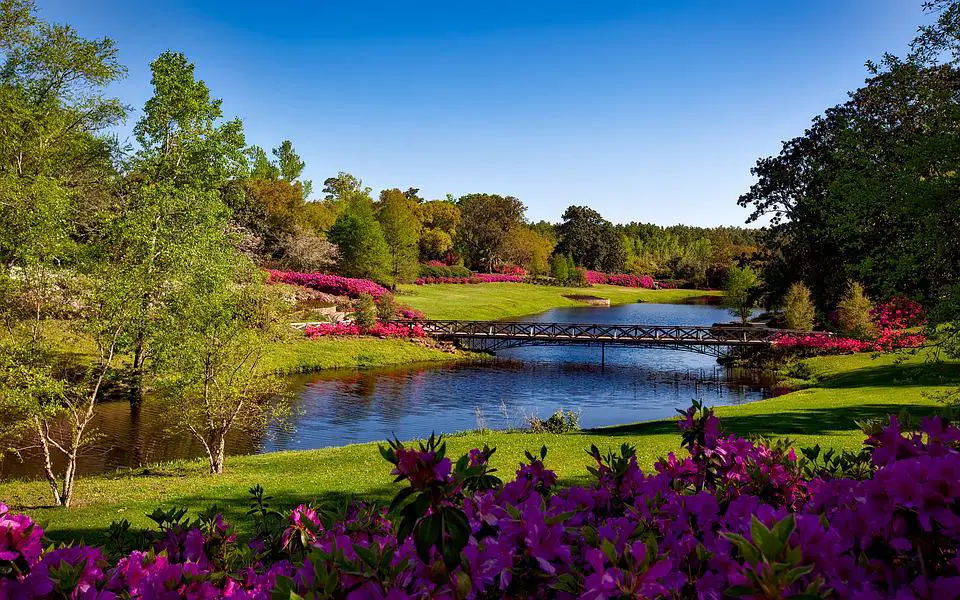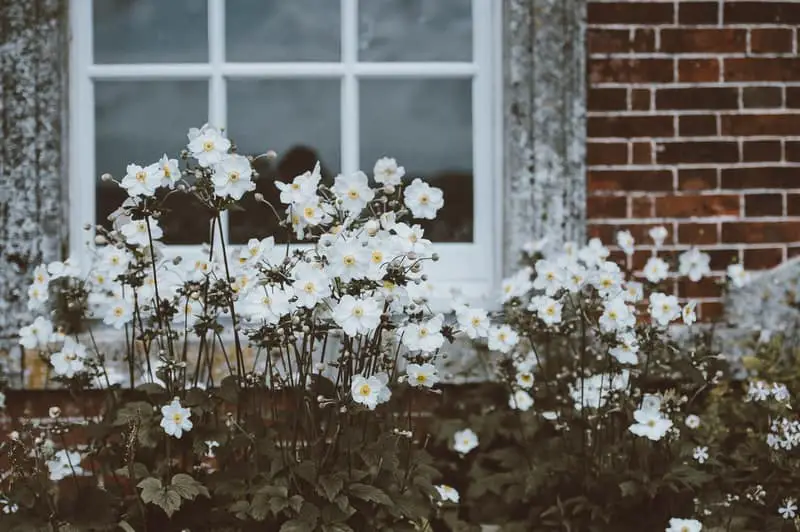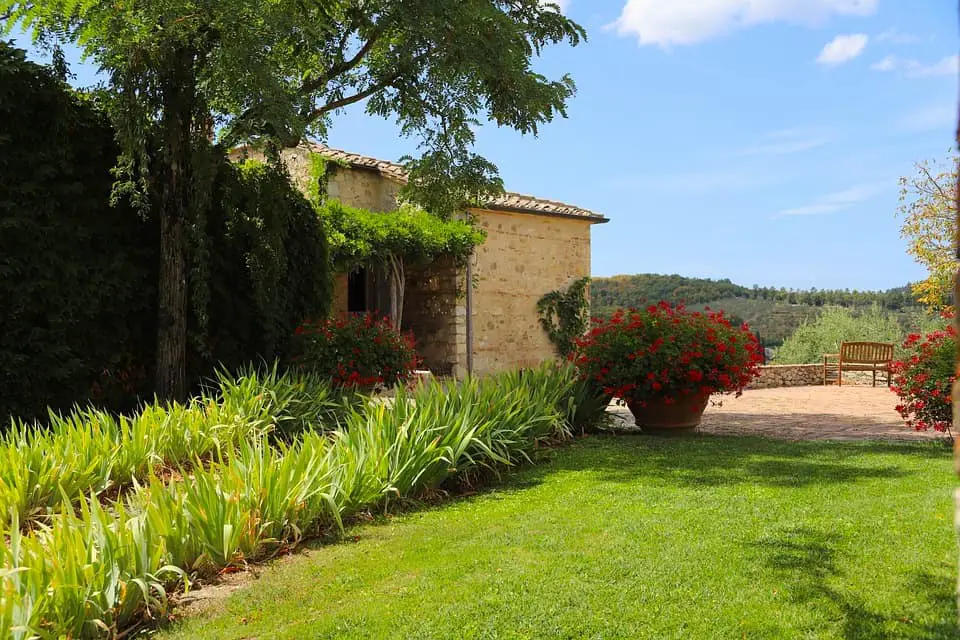Maybe this is the first time that you have had to worry about landscape care because this is your first home, or perhaps this is the first time that you have decided to care for your yard yourself. Either way, this guide will help you get started on the right foot.
When we decide to beautify our property through landscaping, we also need to take on the responsibility of maintenance so that it remains aesthetically pleasing and healthy.
This task is easier said than done for landscaping experts and novice homeowners. The planting and construction is often the easy part. The maintenance is where we are really tested.
It takes a lot of commitment to care for your property. A beautiful landscape is too often installed just to become overgrown and messy within a few years due to lack of maintenance.
Seven Essential Aspects of Yard Maintenance
- Watering
- Mowing
- Mulching
- Weeds
- Insects
- Pruning
- Fertilizing
If you want to learn about all these things, you came to the right place. This article will help guide you in the right direction.
Watering
Water is the lifeblood of our plants. Maintaining moisture levels is crucial in managing our landscape.
Water carries organic compounds and nutrients throughout our plants and allows them to carry on the process of photosynthesis. An under-watered plant will look discolored and wilted. By the time that you notice a plant wilting, you are already too late, and you need to water immediately.
There are some simple rules to follow when it comes to watering:
- Water new plants more often. It is a common fact that new plants need more watering to survive. Whether you are caring for a newly planted seed, flower, shrub, or tree, the concept is the same. The new seed or plant has an underdeveloped root system (or it just had its root system trimmed when it was transplanted). This leaves it struggling to take in enough water to sustain its growth.
- New plants should be monitored daily and watered any time the soil starts to dry. Stick your finger in the soil and see how it feels. A bit moist is perfect, muddy is too wet, dry is too dry for a new plant. Keep in mind that the size of the plant matters. Logically, the roots of a newly planted large tree will be a couple of feet below the surface, so long deep waterings are more beneficial, whereas the roots of new grass seed are right at the surface, so a very light watering will do just fine.
- Once you get to know your yard, a quick walk-through should be enough to tell you which areas, if any, need water. Don’t make the mistake of drowning your plants. Plants need water, but they also need oxygen. If their roots can’t take in the required oxygen, the plants will die.
- Many newbies will plant too deeply and water too heavily, which will result in plant death. New plants will benefit most from consistently moist soil.
- Don’t just set up a sprinkler on a timer and let it go. You need to monitor the conditions.
- Established plants need less care. After a month or two, your plants will be more self-sufficient, and you can check on them once or twice a week. Most homeowners find that they have one or two problem areas or more delicate plants that need to be monitored more closely. These plants or areas can often be used as indicators for the rest of the yard.
- Established plants need less attention from you Once the plants’ roots have caught up to their growth, they become very good at seeking out and taking in water.
- Experts say that for a larger tree or shrub, the first year after planting, they are in recovery, the second year they stabilize, and the third year they should start to flourish.
- After the first few months, most plants will be fine if you live in an area that gets sufficient rainfall. An experienced gardener has a feel for the land and nature and can tell when things are getting too dry and will need watering. As long as you take a walk through your yard now and then and pay attention to the soils and plants, you should be able to tell which if any areas need more water.
- Watering in the late evening, during the night, or early morning is suggested. Temperatures are typically lower during these times; therefore, less water evaporates. Also, watering mid-day in the hot sun can leave water droplets on the plant leaves, which can tend to result in leaf scorch for some of your more tender plants. It’s a bit like how we humans can sunburn more easily when we are wet.
- Don’t over irrigate. Some people feel that an irrigation system is necessary to maintain their landscapes. This is only true if you are trying to have a green landscape in a climate that would otherwise be dry and brown.
- For most parts of the United States, planting the correct plants for your area and watering them a bit while they are adjusting to their new surroundings is all the attention they need.
- Consistently watering with an irrigation system leads to underdeveloped shallow roots dependent on irrigation to survive. Well-established plants that have been allowed to acclimate to the actual environment that they live in will be much more healthy and pest and drought tolerant in the long run.
- Every plant has its own needs, but some are very similar. Please spend some time researching the plants that you intend to grow and plant them in areas of your yard that are suitable for their ideal growth. This will significantly reduce the amount of attention that they need from you.
Much energy and resources are wasted by us humans trying to get plants to grow where they don’t belong. If we plant native species in proper areas, we can all live happily ever after.
Mowing and Lawncare
Mowing your lawn is another essential part of caring for your landscape. This is the area of landscape care that most people feel more comfortable with. Most of us have cut some grass at one time or another, and in general, grass is very forgiving and hardy. Your lawn can take a lot of punishment, so don’t spend a lot of time worrying about it.
Here are some tips to make this task a bit easier than it is already:
- Your lawn is made up of millions of small blades of grass. Each of these is an individual plant that is not so different from any other plant in your yard. Treat it this way, and life will be good.
- If your lawn is newly seeded, keep it moist.
- Once established, a few really deep waterings during the driest parts of the year will encourage deep root growth and will likely benefit the plant.
- Daily irrigation is a waste and results in shallow roots and a weak lawn.
- Cut your lawn to a height of no less than 3″.
- Taller grass resists weeds and disease more easily, keeps the soil cooler, requires less water, and promotes deeper roots.
- Never cut off more than 1/3 of the blade at one time. This means that if you are keeping your grass at the recommended 3″ and it gets to be 4 1/2″ tall, it is time to mow.
- Change up your patterns while mowing to reduce wheel damage to the lawn. If you are using a zero-turn mower, watch out for wheel spin!
- Keep an eye on the color. If the grass is starting to yellow, it probably could use a bit of fertilizer. I’d suggest an organic fertilizer so that you are not adding to the chemical pollution of our soils and water. There should be no reason to fertilize more than twice per year. Any more than that is likely a waste of time and money unless your soil is horrible. My lawn is old and established and never gets watered or fertilized.
- Always leave your clippings on your yard. Leaving the clippings is merely allowing the nutrients to go back into the soil.
- A mulching mower is your best bet.
- Keep your blades sharp—the cleaner the cut, the quicker the plant recovers. Just like us. Have you ever noticed that a really clean razor cut on your skin will heal much more quickly than a rough and jagged cut? We are not so different from plants, after all.
- If your ground is very compacted, core aeration will help. Many new subdivision lawns are very compacted due to the heavy equipment that has been used during construction and because the developer likely sold off most of the valuable topsoil. An older lawn with good topsoil won’t need aeration.
- Your lawn will likely not need thatching. Thatching is a problem of overcut, over irrigated, and over-fertilized lawns. A healthy, diverse, and organic lawn shouldn’t need thatching.
- As with any environment, diversity leads to strength. The more diverse your grass is, the more resilient your lawn will be. Having many different grass types (and dare I say even a few weeds) growing in your lawn will make it more resilient.
- Over fertilized and over irrigated lawns are the most fragile. A lawn that is mowed properly needs very little attention. You do realize that grassy fields cover this earth, and no one ever fertilizes or waters them, don’t you?
- Don’t freak out about water. Established, healthy laws will go brown during some of the driest times of the year, but they will bounce right back when it rains. That is nature’s way.
- In the fall, simply mulch up the leaves along with the grass and leave them on the lawn. The mulched-up leaves will act as a fertilizer. If you have many trees and the leaves are thick, you may need to remove some of them. You don’t want thick, wet leaves matting down your grass. Back to logic, right? Little plants under heavy wet mats of leaves are probably not too happy.
Pests
Weeds and insects are part of our natural habitat, just like the pretty plants and the animals that we enjoy. Part of being in balance with nature and your landscape is to accept that there will be some weeds and some bugs. It is unrealistic for us to think that we can completely control Mother Nature. We can help guide her in a direction that pleases us in our yard, but we can’t control her. To believe otherwise leads you down a path of great expense, frustration, and a chemical nightmare.
Weeds
There are many ways to control weeds that don’t include nasty chemicals. Possibly the most earth-friendly alternative is cover. Cover the bare ground with a natural product and encourage the plants you like while discouraging the ones you don’t. So what does that mean?
Any bare ground is likely to grow weeds. To discourage them, we can cover the bare ground. There are many ways to do this, but one of the most natural ways is to use leaves and yard debris to cover the ground.
Pulling
Either way, you will need to spend time pulling weeds. It is important to stay on top of this task so that it doesn’t get out of control. It is easiest to pick weeds right after it rains when the soil is the softest.
Most of the tiny new weeds can be pulled by hand, while larger, more established weeds will need to be dug out using a shovel or trowel.
Please do not resort to chemical treatment as this will only kill the existing weeds and do nothing to kill the new weeds, so once again, it is a vicious circle. You spray, the weed dies, the hazardous chemical leaches into your groundwater, a new weed grows, you spray again, and so on. Costly, frustrating, and not at all earth-friendly.
Your money and time would be better spent hiring a neighbor kid or your kids to pick the weeds once a week over the summer months.
Lawn Weeds
Okay, now let’s talk about lawn weeds. It’s once again about cover. A tall, lush, and healthy lawn will shade the ground and allow less weeds to grow than an unhealthy, short-cut lawn that leaves bare ground exposed. Remember our discussion about diversity. A lawn with a few weeds growing in it may not look like the links at Whistling Springs, but it will make for a more resilient lawn.
If you really can’t bear having any weeds in your lawn, then there are organic weed control choices that use corn gluten to control the new weeds from sprouting. If you have larger, more established weeds, a small trowel will usually take care of them.
Insect Control
I have been landscaping a very long time, and I have not come across insect problems that were much more than a nuisance. For the most part, the insects will feast on a plant’s leaves and then move on. It is rare for an insect to kill the plants, but there certainly are exceptions. Typically, a naturally maintained and healthy plant can resist the insects on its own without help from us. I would not sweat it. If the chewed leaves bother you, you can try to apply some neem oil, an organic oil that discourages leaf eater.
Mulching
You should take all leaves, sticks, etc., that collect in your yard and use them to cover the bare ground in your beds. If that is not enough, purchase a natural wood mulch to cover the remaining bare ground. A nice thick layer of decomposing wood and leaves will make a nutrient-rich barrier to the weeds growing up from beneath and make it easy to pull out any weeds that start from seed on top.
All of this natural material will decay over time, making your beds more fertile every year. Why do you think that the forest floor is usually relatively weed-free and covered in very fertile and soft topsoil?
When you buy mulch, please buy the natural or recycled variety. And don’t have them spray it with some odd-looking color that will fade and look even worse in a few years. Remember, natural is better. Everything decays and goes into our soil. We don’t need to add more chemicals to our earth.
The Circle
I am always amazed at the ridiculous circle that many homeowners and landscapers create. The homeowner pays to have all of their leaves raked up and hauled away in the fall, and then they pay to have wood mulch spread on their beds in the spring. Okay, let me get this straight. You want me to haul away a wood product and then bring you back a different wood product?
It doesn’t make much sense.
Fabric?
An alternative to heavy mulching would be to use landscape fabric to cover the bare ground and then cover that fabric with mulch or stone of some sort. Landscape fabric does a great job of keeping all of the plants below from coming up, but it does not stop the seeds that land on the top from growing. So, while it will kill off the already existing weeds, it won’t prevent new ones, and it keeps your mulch from decaying into the soil and fertilizing your beds.
If you are an avid gardener, you will not want to use fabric because it restricts your perennials’ ability to spread as they would naturally, and it also makes it harder for you to change your plantings and split your perennials.
A great alternative to fabric is thick layers of newspaper or cardboard. These products will kill off the existing weeds and will simply decompose over time. Did I just find a use for all of those old Amazon boxes?
Pruning
Pruning is the stuff that frightens new landscapers the most. So I need to clip off parts of these plants that I bought? That sounds dangerous! It can be, but mostly for you. Good pruning shears are very sharp. I’d be lying if I said that I haven’t seen a couple of newbies slice into their own fingers over the years. Just stay calm and make sure that you are cutting a twig and not your finger.
Many of the plants in your yard will never need pruning, so don’t get too excited. Once again, the more natural our yards are, the less maintenance we will need. This goes for pruning also. Most of the pruning that I have done over the years has been to control a plant that is too big for the space in which it is planted or to keep a plant the desired shape, rather than its natural shape that it wants to grow to.
Here are some general tips:
- Most plants will not enjoy heavy pruning. Keep it to a minimum and do it more often if needed. Typically, you never want to prune off more than 1/3 of anything (just like your grass).
- For the most part, you will want to prune while the plant is dormant. Usually, late fall or very early spring works out well. Once again, it is very logical. Cutting branches off a plant in its most vigorous growth period (spring) will not make it happy.
- Plants that bloom on old existing wood can typically be pruned right after they bloom so that you are not cutting off next year’s blooms.
- Dead flowers can typically be pruned off perennials, which will likely encourage more blooms.
- Cracked, split, extensively chewed, damaged, or dead branches should be removed.
- Always make your cut just after a bud or lateral branch. Again, sound logic. Leave the branch ready to grow again.
- Always use sharp tools and make clean cuts.
- Use a tool sized for the job. I have often seen newbies using a small hand shears to cut a 1″ branch. As they squeeze with both hands and twist that shear, they are not only damaging the plant; they have also likely bent the shear and ruined the blade. Stop, go get a lopping shear or a small hand saw.
- When pruning for shape, prune a bit, stand back and look at it and then prune some more. Walk around the plant to see what it looks like from all sides.
- Never use a pole pruner near electrical wires (it seems obvious, but it happens all the time).
- Don’t cut the top off of a tree with a strong, dominant center stem (think Spruce tree)
Shaping
Most of your pruning will likely be shaping. You are merely trying to prune that plant as little as possible to retain the shape or size that you need it to be. Most homeowners run into trouble because they wait too long.
Plants get planted, they grow for several years, and then one day, you walk outside and say, “Wow, that shrub has grown way too big!” At this point, it is already a problem. Had you trimmed it a bit every year, it would likely be well-shaped and in control, but now it is way out of shape, blocking half of your window and rubbing on the side of the house.
The sad part is, you may be better off removing it and trying again with a plant more well suited for the spot. But you did spend your hard-earned money on this one, so it may be worth a try.
Rejuvenational Pruning for Single-Stemmed Plants
When we are trying to rejuvenate a single-stemmed plant that would otherwise need to be removed we are using most of the rules above, but we are pushing our limits in an effort to avoid needing to completely destroy the plant.
Single stemmed plants include most trees and any shrub with only one stem coming out of the ground. Be aware that stem count is not the only factor. Even if the plant has multiple stems, it is in this category if it does not sprout new stems from the ground every year. Most woody plants are in this category. Examples of plants like this are Burning Bush, most Viburnum, Amelanchier, Maples, Oaks, Ash, etc.
The single-stemmed plant can be pruned back only so far before you would be left with nothing but a stump. This is never recommended; it will likely die. You can thin it out by removing some of the internal and interfering branches, and you can downsize the remaining branches as much as possible, keeping in mind that this poor plant will need some branches to grow some leaves on when spring arrives. Vary your cuts in height and shape the plant into a shape similar to its natural form. You will end up pruning off more than 1/3, and the shrub will likely sprout back if you didn’t push too far, and it dies.
When it sprouts back, you hit it hard again for the next several years, each year striving for that size that you would have liked it to be. In general, if this hasn’t worked after three seasons, you might as well replace it with something more well suited.
Rejuvenational Pruning for Multi-Stemmed Plants
Multi-stemmed sprouting plants have many stems coming out of the ground and sprout more every year. These get wider and wider at the base every year and spread quickly. Examples would include plants like Dogwood, Spirea and Lilac.
This type of plant, if it is in good health, can typically be cut down to the ground, and it will re-sprout in spring. I’m not saying that this is the best route to go, but sometimes it is a good choice.
If you are not ready to go that drastic, you should start by removing a bunch of the thickest, heaviest stems. Cut these big ones right down to the ground. After that, use staggered cuts at varying heights to trim what remains of the plant into the size and shape that you desire. By cutting out the thickest and heaviest stems each year, you will be able to keep these shrubs whatever size you would like, and they will always look good.
Hedging
Another pruning style that seems to be very popular with homeowners is hedging.
Typically hedging would only be used on plants that are well suited for this technique. Plants like Arborvitae, Boxwood, Yews, etc., take well to hedging.
But, it seems that once a homeowner buys that motorized hedging shears, it becomes the go-to pruning tool for everything in their yard. It is pretty quick and efficient but not ideal for many plants.
When you hedge a plant, you are trimming off all branches at the same height. This causes the branches to send out extra shoots from this level each time you hedge. Over the years, this will leave you with a plant that only has leaves on the outside perimeter and nothing growing in the middle.
This becomes a problem when you decide to downsize that plant. You will cut a bit too far and realize that it is hollow and empty inside. Not great.
Twigging
If you are a fan of the hedging shears, please use them sparingly and realize that any sheared plant should also be thinned a bit to let light into the center near the trunk. Shear it and then take your hand pruner and prune out some of the more densely branched and leaved areas to allow sunlight in. If you do it right, you can maintain a healthy hedge with a great shape.
Fertilizing
The entire chemical fertilizer industry was built on our desire to grow the same plant repeatedly in the same soil and maximize that plant’s growth while not allowing the soil time to recover.
Once again, diversity is king.
You may want to do a bit of reading on permaculture. Anyone trying to sell you on the thought that you need to apply chemical fertilizers to your landscape is merely pushing product.
You should strive to grow a native and diverse selection of plants that are well suited for where they grow. You will also want to use leaves, grass clipping, and mulch as natural fertilizers. Don’t haul them away; use them to nourish your soil. If you do this, you will have very little need for fertilizer.
If you feel the need for fertilizer, please choose some of the many organic fertilizers that are now available, read the label and help preserve our earth for the future.
It is simply criminal the amount of chemicals many homeowners dump onto their landscapes every year in the pursuit of the “perfect” yard. We are poisoning this earth.
Final Thoughts
Well, there you have it. It is probably more than you wanted to know, but if you follow most of the suggestions above, maintaining your yard won’t be as hard as many people make it out to be. If we work with Mother Nature, the experience can be quite pleasant and rewarding. If we work against her, it can become quite miserable and detrimental to our happiness and the happiness of this earth.

